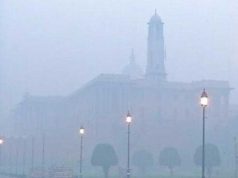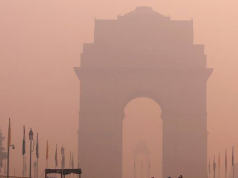
Champaign, Illinois – The small kerosene lamps that light millions of homes in developing countries have a dark side: black carbon – fine particles of soot released into the atmosphere.
New measurements show that kerosene wick lamps release 20 times more black carbon than previously thought, say researchers at the University of Illinois and the University of California, Berkeley. The group published its findings in the journal Environmental Science and Technology.
Black carbon is a hazard for human health and the environment, affecting air quality both indoors and out. It has a major impact on climate as it absorbs heat and sunlight, warming the air. Although it only lingers in the atmosphere for about two weeks, one kilogram of black carbon can cause as much warming in that short time as 700 kilograms of carbon dioxide circulating in the atmosphere for 100 years, according to study leader Tami Bond, a professor of civil and environmental engineering at the University of Illinois.
“There’s a lot of interest right now in reducing black carbon as a quick way to reduce climate warming – a way to reduce warming in the immediate future, although not a full solution to long-term climate change,” Bond said. “In its short lifetime of two weeks, it adds a lot of energy to the atmosphere. It’s immediate warming now, which is why people are talking about reducing it.”
Previously, emissions researchers did not consider kerosene lamps a large source of black carbon because of the relatively small amount of fuel used in a lamp verses other particle-emitting sources, such as cook-stoves or diesel engines. However, the new measurements from the field show that 7 to 9 percent of fuel burned is converted to black carbon – a very high emission factor, making such lamps a major source of black carbon. In addition, unlike the cocktail of aerosol particles released by cook-stoves and cooking fires, the dark curls rising from a kerosene lamp are nearly pure black carbon.
The good news is that there are inexpensive, easy alternatives that could curb black carbon emissions from lamps. For example, LED lamps charged by solar panels are becoming more popular. But an even easier fix would be to place a glass shield around the lamp, which reduces – though does not eliminate – the amount of black carbon particles that escape.
“Unlike cooking stoves, which also are very important health hazards but challenging to replace, people actually like to replace the kerosene lamps,” Bond said. “When it comes to lamps, nobody says, ‘I really like this tin can that I filled with kerosene.’ It’s a plausible, inexpensive way to reduce climate warming immediately, which is something we haven’t really had in the black carbon field before.”
The study authors hope that, with the new data in hand, agencies working in developing countries will implement lamp-replacement initiatives to develop and distribute affordable alternatives.
“”Getting rid of kerosene lamps may seem like a small, inconsequential step to take,” said study lead author Nicholas Lam, a UC Berkeley graduate student, “but when considering the collective impact of hundreds of millions of households, it’s a simple move that affects the planet.””
The Centers for Disease Control and Prevention, the National Institute of Environmental Health Sciences, the U.S. Agency for International Development and the Environmental Protection Agency supported this research.
Source: University of Illinois.
[Photo: Kerosene Lamps. © Tami Bond]














